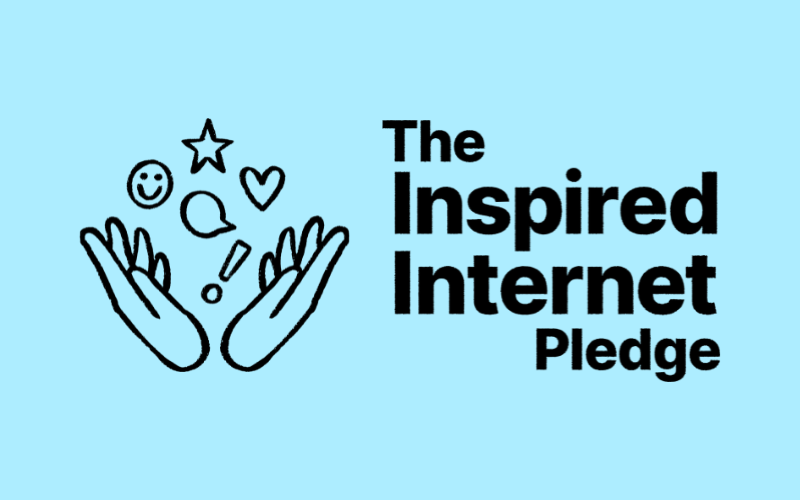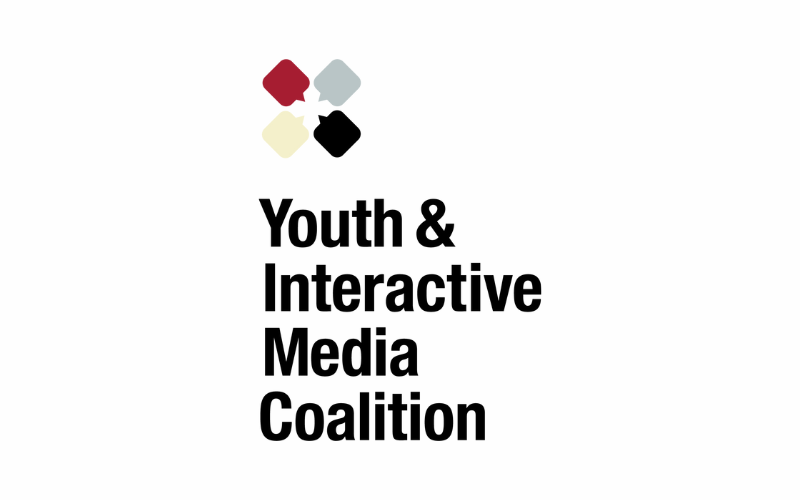Introduction
Today’s youth are living in a digital world that is increasingly shaped by Artifical Intelligence (AI). In our most recent Pulse Survey, Use of Voice Assistants and Generative AI by Children and Families, we asked parents* of children ages 3 to 12 about emerging trends related to the use of Voice Assistants by families, including how they are used within the household, children and parents’ relationships with these assistants, and their perceived impact on children’s learning and development. We also asked about their experience with, and attitudes about, Generative AI.
Our questions were centered around:
- How are children accessing Voice Assistants, how often are they using them, and what are they using them for?
- What type of relationship(s) do children have with Voice Assistants? How do they treat them and interact with them?
- How are families using Voice Assistants, and what functions do they serve in the home? Are parents using them to help manage their families, and if so, how?
- What risks and opportunities do parents see in Voice Assistants?
- How often do parents and children access Generative AI, and what do they use it for?
Why this approach?
Understanding how children and families view and are using these devices and technologies can help us guide them through navigating this new world of AI. In particular, examining age differences can be especially informative. As children age from preschool to middle school, they experience dramatic developmental changes including the shift to a more peer-centric social network and the emergence of more sophisticated understandings of the distinction between fantasy and reality (Woolley & Nissel, 2020). These changes likely shape both motivations for using these technologies and how they are used.
*In the report, we used the term “parents” to refer to all parental figure caregivers.
Key Takeaways
Children’s Relationships with Voice Assistants
What We Asked
We asked parents about their child’s behaviors toward, and beliefs about, Voice Assistants.
What We Learned
In regards to parasocial relationship markers, many parents agreed or strongly agreed that a Voice Assistant makes their child feel comfortable, while nearly half felt that their child believes the Voice Assistant has thoughts and emotions. In general, the types of beliefs that could support a parasocial relationship between children and Voice Assistants were stronger among younger children. Parents who reported stronger evidence of these relationships for their children also said that the devices are more effective teachers.
When it comes to manners and politeness, the majority of parents reported that their children say “please” or “thank you” either often or always when talking to a Voice Assistant. A significantly higher percentage of younger children used polite language compared to older children.
Percentage of children who always or often use polite language like “please” and “thank you” when talking to a Voice Assistant
71%
Ages 3-5
65%
Ages 6-9
63%
Ages 10-12
Family Dynamics
What We Asked
We asked parents whether the use of Voice Assistants improves or worsens markers of family dynamics.
What We Learned
Around half of parents said that Voice Assistants improved their traditional family bonding activities (e.g., watching a movie together) as well as improving their family’s overall interactions and communication, with parents regularly accessing functions such as timers, reminders, calendars, and similar features, to help manage their families. A significantly larger portion of parents with younger children reported a positive impact of Voice Assistants use on family interaction and communication, as well as shared family experiences, compared to parents of older children.
One interesting differentiator is in parental attitudes about the influence of Voice Assistants on family interaction, communication, and shared experiences. We found that parents with a higher degree of education and higher income tended to view Voice Assistants more positively in terms of their impact on their family than parents with lower degree of education and income.
Percentage of parents who think the use of Voice Assistants improves their…
63%
Child’s Ability to be Independent
62%
Family’s Shared Experiences
50%
Traditional Family Bonding Activities
49%
Family Interaction & Communication
Perceived Impact of the use of Voice Assistants on Child Learning & Social Skills
What We Asked
We asked to what extent parents thought that their child’s use of Voice Assistants improves or worsens their social skills and learning.
What We Learned
The majority of parents felt that Voice Assistants improved their child’s access to accurate and factual information, creative problem-solving abilities, and focus on homework and educational activities. Similarly, a majority of parents felt that their children’s use of Voice Assistants improved their ability to connect with others, their understanding and expression of emotions, and their kindness and civility towards others. A significantly higher percentage of parents with children ages 3 to 5 reported that the use of Voice Assistants improved their child’s ability to understand and express emotions compared to parents of children ages 10 to 12.
Cross-analysis revealed that children who demonstrated signs of parasocial relationships with Voice Assistants had parents who expressed more positive beliefs about the impact of Voice Assistants on learning.
Percentage of parents who think their child’s use of Voice Assistants improves their child’s social skills
61%
Ability to Connect With Others
56%
Understanding and Expression of Emotions
55%
Kindness & Civility Towards Others
Percentage of parents who think the use of Voice Assistants improves their child’s learning and education
70%
Access to Accurate & Factual Information
68%
Creative Problem-Solving
63%
Focus on Their Homework & Educational Activities
Parent’s Ease and Concerns around Voice Assistants and Generative AI Technologies
What We Asked
We asked parents how they felt about Voice Assistants and Generative AI behavior.
What We Learned
The majority of parents feel that Voice Assistants behave in a predictable manner and they felt comfortable having a personal conversation with the technology. However, a subset of parents expressed discomfort with the technology in regards to its intent and data collection. Some parents also expressed concerns about risks related to their child’s use of Voice Assistants such as data privacy, exposure to strangers/harmful others, surveillance/monitoring of behavior, and exposure to ads/marketing materials.
When it comes to Generative AI like ChatGPT, on average, parents are significantly more concerned that Voice Assistants are trying to get their private information compared to Generative AI; however, most parents do not strongly believe either of these technologies are intruding on their privacy.
Concerning their comfort in having personal conversations with either technology, parents responded significantly more favorably about Voice Assistants compared to Generative AI, suggesting that parents feel more at ease engaging in personal conversations with Voice Assistants than with Generative AI, despite higher concerns that the former may be accessing their private information.
Percentage of parents who agree with the following statements…
“They behave in a predictable way”
65%/49%
Voice Assistants/Generative AI
“I feel comfortable having a personal conversation with them”
51%/46%
Voice Assistants/Generative AI
“Their behaviors freak me out”
35%/32%
Voice Assistants/Generative AI
“They are trying to get my private information”
31%/30%
Voice Assistants/Generative AI
“I believe they have some bad intentions”
27%/28%
Voice Assistants/Generative AI
Parental Mediation of Voice Assistants
What We Asked
We asked parents what tactics they employ in regard to educating their children about the technology, and whether or not they mediate their child’s use.
What We Learned
More than half of parents indicated that they had conversations with their child regarding their use of Voice Assistants, talked with their child regarding the accuracy of information provided, and set up a child account for their child. Parents were also more likely to have rules surrounding the amount of time their child could use a Voice Assistants and the topics their child could discuss with a Voice Assistant. Additional age cross-sectional analysis shows that pre-teens experience a greater deal of autonomy and freedom in their use of Voice Assistants compared to younger children.
Percentage of parents who have ever done the following…
76%
Talk with their child about how they use Voice Assistants
64%
Discuss the accuracy of information from Voice Assistants
59%
Limit the topics or questions their child can talk about with the voice assistants
54%
Set up a child account on the Voice Assistant for their child
52%
Limit the amount of time their child uses Voice Assistants
Use Of Generative AI
What We Asked
We asked parents how much they and their children use Generative AI technologies such as ChatGPT.
What We Learned
According to parents, 40% of children have never used Generative AI tools like ChatGPT. Those who say their children have used this technology cite information/advice seeking and creative activities as their reason for use. When it comes to parental use of this new technology parents are distributed across the spectrum of use with about one-quarter of parents indicating they have never used Generative AI, and a similar amount being daily users of the technology.
Perceived Impact Of Generative AI
What We Asked
We asked parents what they thought the impact of Generative AI technology may be on a number of topics related to their children’s development.
What We Learned
Across the board, most parents perceive Generative AI as having a positive impact on their child’s curiosity/desire to learn, imagination/creativity, critical thinking skills, education/schooling, and social skills. When looked at across age groups, parents of children in the two youngest age groups (3-5 and 6-9) were more likely than parents of older children (10-12) to report a positive impact of Generative AI on their child’s imagination/creativity and critical thinking skills.
Percentage of parents who think Generative AI (e.g., ChatGPT) will have a positive impact on their child’s…
65%
Imagination/Creativity
50%
Social Skills
60%
Critical Thinking Skills
In Conclusion
Our report provides insights into how children and families use Voice Assistants and Generative AI tools in the household, as well as parents’ perspectives on how these technologies influence their children’s social and learning development. While findings paint a generally positive picture of how children and parents have embraced AI-powered tools for entertainment, education, creative pursuits, and family bonding, they also raise potential issues around privacy, safety, advertising, and digital literacy that merit careful consideration and further investigation.
As we move toward an AI-saturated future, technology companies can use parents’ and children’s existing behaviors regarding Voice Assistants and Generative AI to address future product design and development decisions (see Recommendations for Industry), and fortify families with age-appropriate mediation techniques and accessible educational touchpoints for both parents and children outlining the benefits and limitations of these technologies.
Because relationships with character-based technologies such as Voice Assistants can be used as tools to increase advertising effects and Generative AI technologies can produce biased or inaccurate information, parents should talk with their children about how they view and behave toward these technologies and teach them how to discern marketing from educational content.







